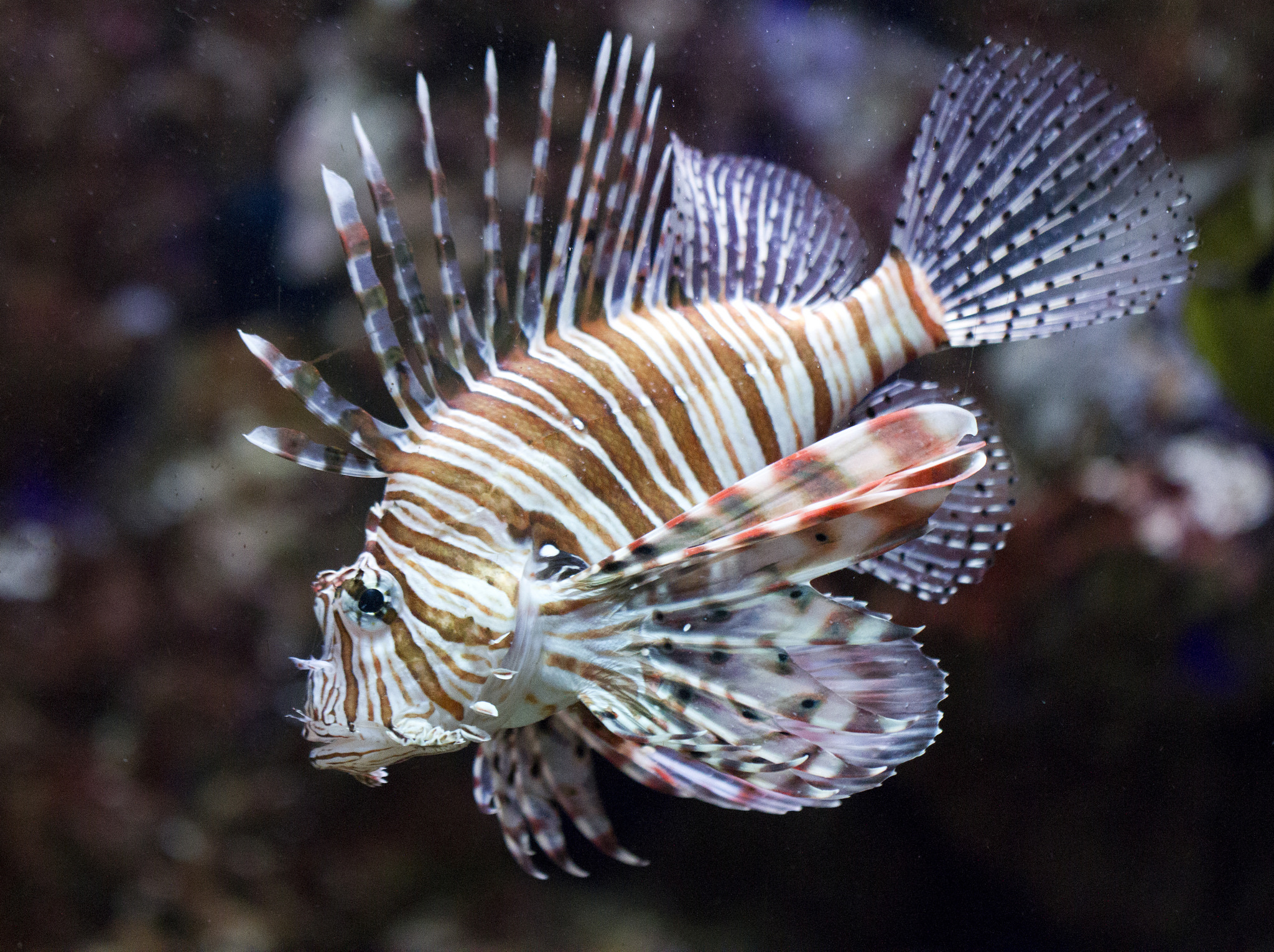Markets are great at solving the problems of allocating resources for useful things like bread, cars, and iPhones. But can the forces of supply and demand address the dynamic problem of invasive species?
Consider the case of the lionfish. “The lionfish invasion is probably the worst environmental disaster the Atlantic will ever face,” Graham Maddocks, president and founder of Ocean Support Foundation, told CNN in 2013. These invasive, venomous fish are consuming everything in their path. With no natural predators and one of the highest breeding rates in the world, lionfish are gradually overtaking reefs from Venezuela to New York.
Native to the Pacific and Indian Oceans, lionfish were inadvertently introduced to the clear waters off Florida nearly 30 years ago. Capable of producing 50,000 eggs every three days, the lionfish population exploded in the Caribbean, and they began devouring commercially important native fish. The lionfish gulps up smaller prey fish, leaving little food for commercially valuable fish, such as snapper and tuna. The aggressive predator also feeds on “grazer” and “cleaner” fish which maintain the health of the reefs that provide habitat for other species – reducing native marine life by 80 to 90 percent in just five weeks in some cases.
This destruction of reef ecosystems is coming with a steep price tag. Over 42 million people in the Western Atlantic Basin rely on the reefs to make a living, mostly through fishing and tourism. Diving alone is a $2.1 billion industry in the Caribbean. If the lionfish’s voracious appetite continues to destroy reefs, paychecks may disappear as hotels, tour services, restaurants, and fish markets go out of business.
Lionfish in the Market
So is there a way for markets to get rid of the lionfish while preserving tropical reefs and commercially important fish? Or must governments intervene to protect the offshore ecosystem from collapsing?
Enter environmental entrepreneurs. Luckily, lionfish are quite tasty. Restaurants in the Southeast are even adding the delicious white fish to their menus, and some higher-end grocery stores, such as Whole Foods, are now selling lionfish. Thought of in this way, lionfish may not necessarily be a costly invader, but rather a valuable resource that could encourage people to harvest them.
Fillets, however, are expensive – costing $30 per pound. With such a large supply of lionfish so close to shore, it seems against the rules of supply and demand for fillets to fetch such a high price. The catch is that there is no easy way to get the spiky, venomous lionfish out of the water and onto the table. The most efficient way to catch lionfish at this time is slow, labor-intensive spearfishing that requires SCUBA equipment. Then, once speared and brought to shore, the lionfish need to be cleaned carefully so as to avoid their poisonous spines.
Most divers sell a whole lionfish to retailers for around $5. The fillet, however, is only a quarter to a third of the entire fish and is time-consuming to extract given the need to take care avoiding the dangerous spines. It adds up to a lot of effort for little reward – the fillets from three speared lionfish might yield one pound of meat, explaining the high retail price.
Innovating the Lionfish Away
In order for the commercial market to grow to a point where enough lionfish are harvested to control their population, innovation along the supply chain will be needed.
Marketing campaigns are underway to spur demand for the flaky white fillets. The Reef Environmental Education Foundation (REEF) has published a lionfish cookbook in an attempt to get people to realize that lionfish is an option for dinner. Whole Foods has hosted “Take a Bite Out of Lionfish”: live filleting and cooking demos and lionfish recipe videos. If these efforts attract new consumers and lionfish prices increase in response with the rising demand, it will spur more fisherman to go after the fish. “The more that people show interest, the more fishermen we’ll have out there going for them,” said Mike Campbell, senior environmental specialist for the Division of Natural Resources in Lee County, Florida.
Another potential approach to increase demand for lionfish is finding marketable uses for them beyond just fillets. Some ideas include making jewelry out of their colorful spines or incorporating carcass scraps in fertilizers. This would increase the value of a dead lionfish, incentivizing more divers to start hunting live ones.
On the supply side of the equation, in Florida, lionfish derbies gather divers to shoot the fish in a competition for cash prizes. It is possible for thousands of lionfish to be harvested in these day-long events. In addition, the Florida Fish and Wildlife Conservation Commission (FWC) is experimenting with approaches that reward divers to remove invasive lionfish. In 2016, for example, the FWC allowed divers to harvest one extra spiny lobster for every 50 lionfish they speared.
Improving the Means of Supply
While improving incentives for lionfish divers could bump the supply of lionfish to the market by a bit, ultimately, a more efficient approach than individually spearing each fish will be necessary to truly make a dent in the population and halt their destructive impacts. Spearfishing requires a lot of effort for little results, but large nets and trawls cannot be used in the reef terrain inhabited by the fish. With lionfish reproducing so quickly and populating waters around relatively poor countries in the Caribbean and Central America, it is important that methods for capturing them can be cheaply and widely implemented.
In that vein, lionfish researchers in Bermuda are exploring ways to adapt basic wire lobster traps to catch lionfish. Others are investigating structural attractants that can trap multiple lionfish as they gather around the structure. Engineers are also developing more capital-intensive means, including remotely operated underwater vehicles (ROV) that electrocute lionfish.
Right now, invasive lionfish are out-breeding, out-living, out-eating, and out-competing native fish in the Atlantic Ocean. But entrepreneurs are quickly rising to the challenge with innovative approaches to connect supply and demand for lionfish through market solutions. With every seafood dinner, necklace, spear-fishing derby, and trap, we are one step closer to overcoming the lionfish invasion ourselves.
This article originally appeared on FEE.org on May 19, 2017.




